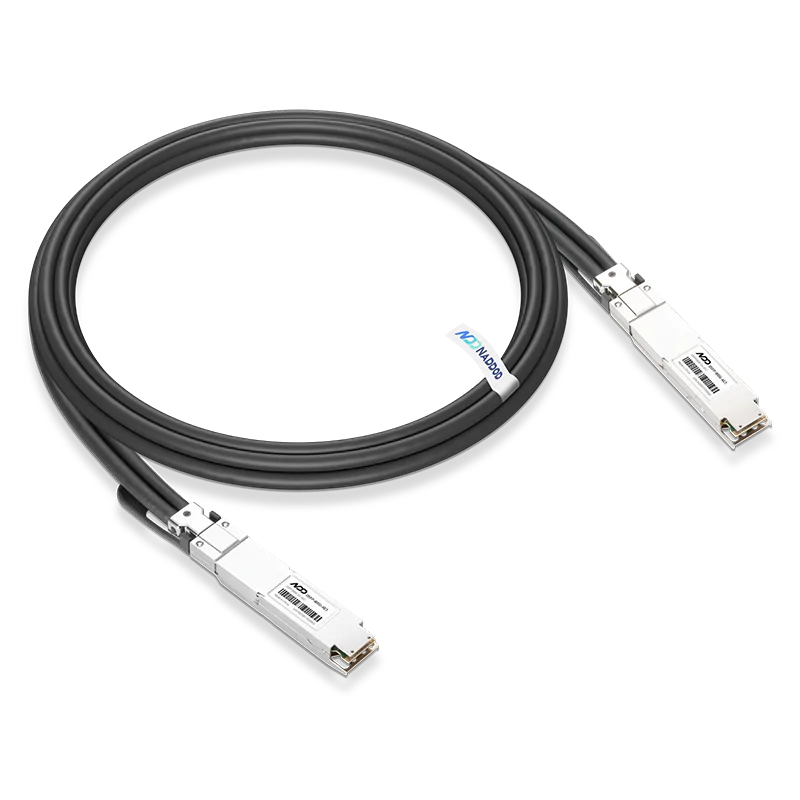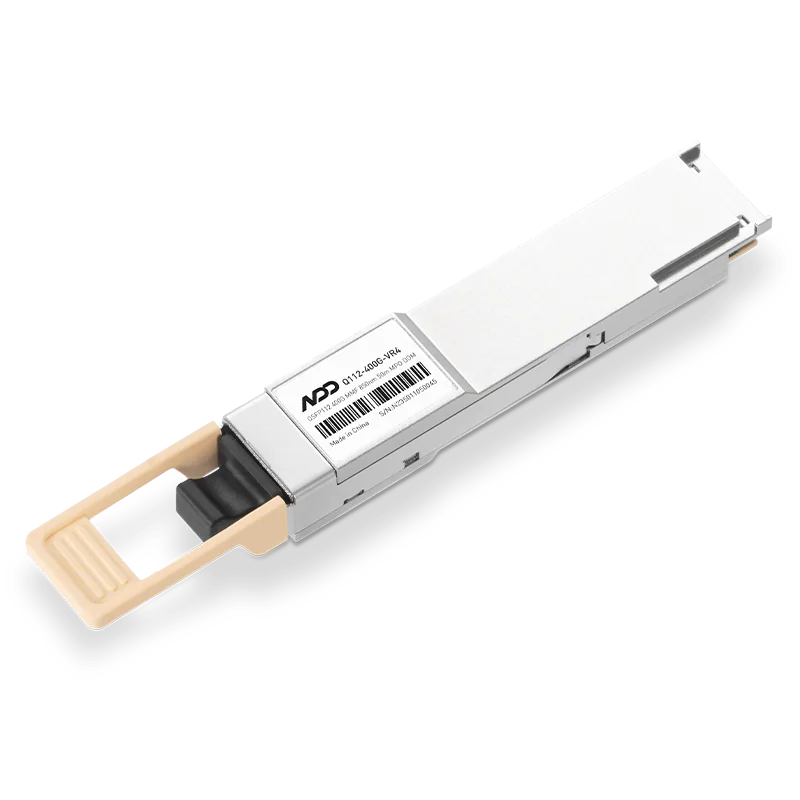The QSFP112 standard is emerging as a critical solution with the increasing demand for higher bandwidth. Achieving 112Gbps per lane in a 4-lane QSFP system, QSFP112 enables the development of a robust 400G interconnect ecosystem. This innovation allows users of legacy QSFP systems to upgrade their link bandwidth to 400G per port efficiently, reducing both costs and transition times.
NADDOD, a leading networking solutions provider, offers a diverse range of QSFP112 transceivers designed to connect switches and NICs, maximizing cost savings and ensuring superior performance. NADDOD's transceivers are known for their high reliability, energy efficiency, and seamless integration with existing infrastructure, making them an ideal choice for AI-based data centers.
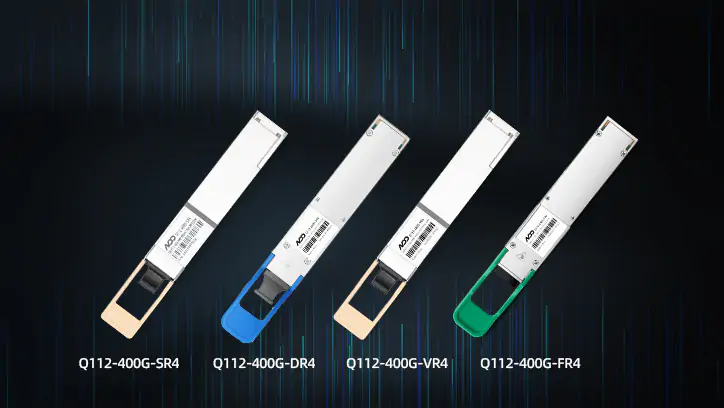
1. What is QSFP112?
QSFP112 (Quad Small Form-factor Pluggable 112) is an advanced optical transceiver module that supports 400G Ethernet. As part of the RoCE (RDMA over Converged Ethernet) series, QSFP112 offers exceptional performance and efficiency, making it ideal for modern data center environments. Its streamlined four-lane electrical architecture significantly reduces power consumption by nearly 30% compared to its predecessor, QSFP-DD, establishing QSFP112 as the transceiver technology of choice for 400G interconnections in the quest for unparalleled data center efficiency.
2. QSFP112 Optical Transceiver Module Advantages
Cost Reduction
The QSFP112 transceiver reduces the number of electrical connections required, which translates to fewer internal electronic components and a simpler production process. Compared to previous QSFP-DD optical transceivers, QSFP112's streamlined design significantly lowers unit costs.
Lower Power Consumption
QSFP112 transceivers consume approximately 3.5W less power than other 400G optical transceivers. This 29% reduction in power consumption positions QSFP112 as a leader in the high-speed optical transceiver market.
Reduced Carbon Footprint
Data centers account for 1%-2% of global electricity consumption. Given that each data center utilizes thousands of optical transceivers, a 30% reduction in power consumption per transceiver can substantially mitigate environmental impact.
3. Key Features of QSFP112 Optical Transceiver Modules
QSFP112 will support a comprehensive range of media and transceiver types popular in the networking industry. For media, this includes passive Direct Attach Copper (DAC) cables, multimode fiber (MMF), and single-mode fiber (SMF). For transceivers and active copper or active optical cable assemblies, this includes Ethernet, Fibre Channel, and InfiniBand-defined transceivers supporting 40 Gbps, 100 Gbps, 200 Gbps, and 400 Gbps. Additionally, backward compatibility with traditional QSFP form factors is crucial for industry adoption.
- Supports 400G Ethernet: Delivers high-speed, reliable data transmission.
- Enhanced Signal Integrity and EMI Performance: Improved design ensures better signal quality and reduced electromagnetic interference.
- Lower Power Consumption: Consumes 3.5W less power than other 400G modules, enhancing energy efficiency.
- Backward Compatibility: Compatible with QSFP56 and QSFP28, facilitating seamless upgrades and integration.
- Reduced Component Count: Fewer internal components lower manufacturing costs.
4. NADDOD’s 400G QSFP112 Transceiver Modules
|
Product |
Media |
Max Cable Distance |
Transmitter |
Connector |
Wavelength |
|
MMF |
100m |
VSCEL |
MTP/MPO -12 |
850nm |
|
|
SMF |
500m |
EML |
MTP/MPO -12 |
1310nm |
|
|
SMF |
2km |
EML |
Duplex LC |
1310nm |
|
|
MMF |
50m |
VSCEL |
MTP/MPO -12 |
850nm |
NADDOD's 400G QSFP112 transceivers are designed to deliver exceptional network performance, ensuring high-speed, reliable data transmission for modern applications. These transceivers significantly boost bandwidth, making them ideal for high-demand data centers and enterprise networks. With features that enhance network performance, reduce latency, and improve overall efficiency, NADDOD’s QSFP112 transceivers are a robust choice for any high-speed networking environment.
5. Common Applications of NADDOD’s QSFP112 400G Transceivers
QSFP112 transceivers are highly versatile and well-suited for 400G Ethernet, high-performance computing (HPC), and data center interconnect applications. They can be used in various scenarios, including switch-to-switch and switch-to-NIC connections, with transmission distances ranging from short to 2km. These transceivers are ideal for both intra-data center and inter-data center links. All NADDOD QSFP112 transceivers, designed for RoCE networks, are compatible with major brands such as Cisco, Arista, and NVIDIA.
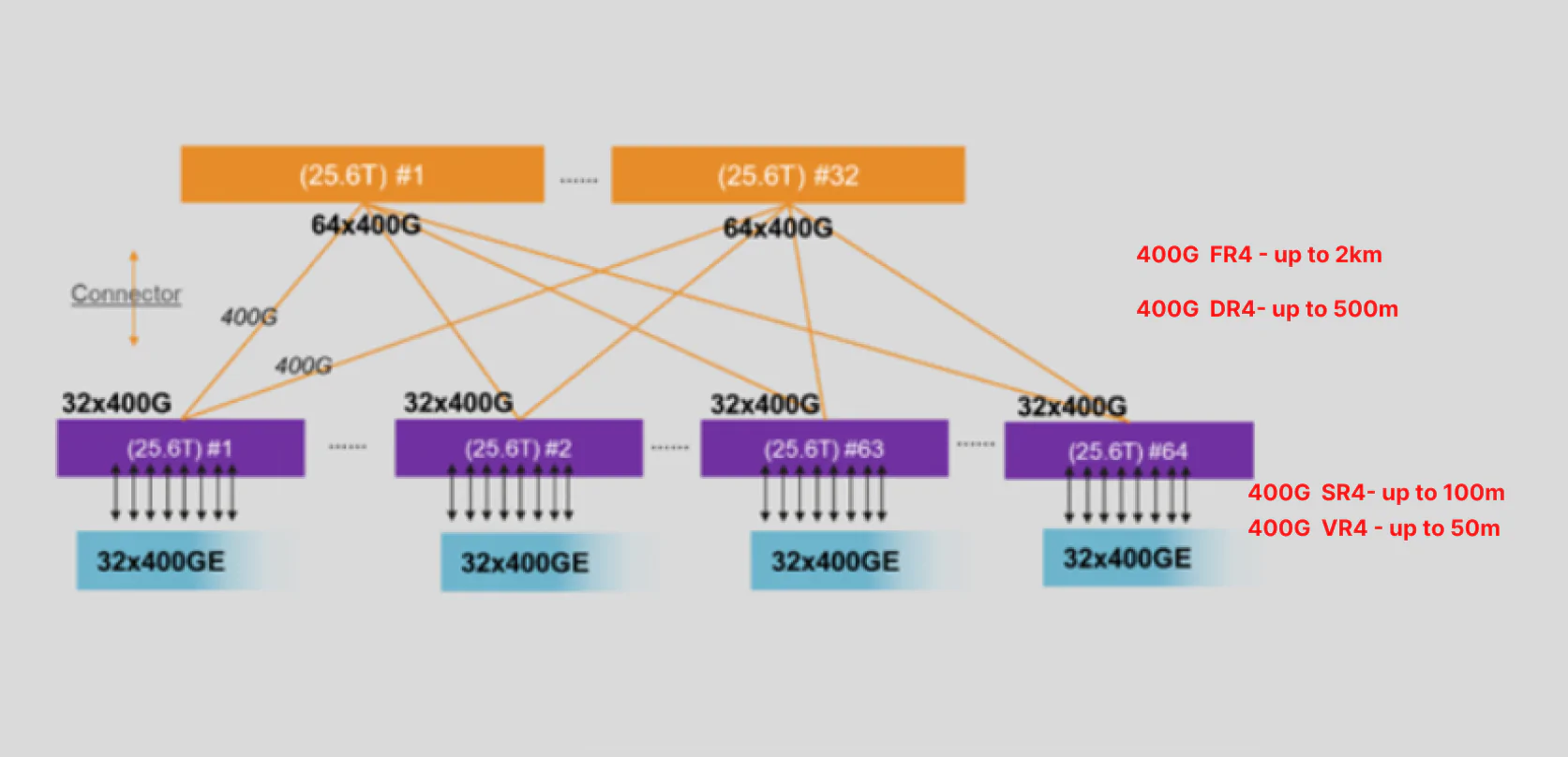
5.1 QSFP112 400G SR4 Application
The QSFP112 400G SR4 transceiver, featuring an MTP/MPO-12 connector, supports transmission up to 100 meters over OM4 multimode fiber. It leverages the powerful processing capabilities of 800G OSFP switches and 400G ConnectX-7 network cards, providing high-speed, short-reach connectivity.
Use Cases:
- 800G OSFP Switch to 400G NIC: An OSFP 800G SR8 transceiver on the switch side connects to two QSFP112 400G SR4 transceivers on the NIC side via two MTP/MPO-12 APC multimode fibers.

- 800G OSFP Switch to 200G NIC: An OSFP 800G SR8 transceiver on the switch side connects to four QSFP112 400G SR4 transceivers on the NIC side via two 1/2 splitter cable fibers.

5.2 QSFP112 400G VR4 Application
The QSFP112 400G VR4 transceiver, featuring an MTP/MPO-12 connector, supports transmission up to 50 meters over OM4 multimode fiber.
Use Cases:
- 400G QSFP112 Switch to 400G NIC: A QSFP112 400G VR4 transceiver on the switch side connects to a QSFP112 400G VR4 transceiver on the NIC sidevia an MTP/MPO-12 APC multimode fiber.

- 800G OSFP Switch to 400G NIC: An OSFP 800G SR8 transceiver on the switch side connects to two QSFP112 400G VR4 transceivers on the NIC side via two MTP/MPO-12 APC multimode fibers.

- 800G OSFP Switch to 200G NIC: An OSFP 800G SR8 transceiver on the switch side connects to four QSFP112 400G VR4 transceivers on the NIC side via two 1/2 splitter multimode fibers.

5.3 QSFP112 400G DR4 Application
The QSFP112 400G DR4 transceiver, featuring an MTP/MPO-12 connector, supports transmission up to 500 meters over SMF.
Use cases:
- 400G QSFP112 Switch to 400G Switch: A QSFP112 400G DR4 transceiver on a switch side connect a QSFP112 400G DR4 transceiver on another switch side via a single-mode fiber.

- 400G QSFP112 Switch to 400G NIC: A QSFP112 400G DR4 transceiver on a switch side connect to a QSFP112 400G DR4 transceiver on the NIC side via a single-mode fiber.

- 800G OSFP Switch to 400G NIC: An OSFP 800G DR8 transceiver on an SN5600 64x800G QSFP112 switch side connect to two QSFP112 400G DR4 transceivers on NIC side via two single mode fibers.

- 400G QSFP-DD Switch to 400G NIC: A QSFP-DD 400G DR4 transceiver on an SN5400 64x400G QSFP-DD switch side connects to a QSFP112 400G DR4 transceiver on the NIC side via a single mode fiber.

5.4 QSFP112 400G FR4 Application
The QSFP112 400G FR4 transceiver is typically used for long-distance switch-to-switch connections, utilizing an EML transmitter to support up to 2km of data transmission. In a typical spine-leaf architecture, it connects the spine layer to the leaf layer over distances up to 2km.
Use Case:
- 128x400G QSFP112 Switch to 400G Switch: Two QSFP112 400G FR4 transceivers are used to connect two switches, with the transceivers linked by a single cable featuring Duplex LC connectors.

6. Conclusion
The 400G QSFP112 transceiver significantly advances data center networking technology, offering high speed, low power consumption, and enhanced environmental benefits. NADDOD's range of QSFP112 modules is designed to meet the diverse needs of modern data centers, providing reliable, high-performance solutions that are both cost-effective and sustainable. By adopting QSFP112 technology, data centers can optimize their infrastructure, achieve greater efficiency, and support the growing demands of data-intensive applications.
NADDOD stands out for its rigorous testing procedures, ensuring each QSFP112 transceiver meets stringent performance standards. This commitment to quality ensures that every module operates at peak efficiency, providing stable and consistent performance. Furthermore, NADDOD maintains a large inventory, allowing for swift delivery and ensuring that customers' networking needs are met promptly and reliably. This combination of high performance, stringent testing, and dependable delivery makes NADDOD's 400G QSFP112 transceivers a top choice for network professionals seeking to enhance their network infrastructure.
7. Frequently Asked Questions about QSFP112 Modules
Q: What are the differences between QSFP112 and QSFP28/56?
A: QSFP112 focuses on the next generation of connectors, cages, and modules in the QSFP series. It aims to extend bandwidth by scaling single-lane speeds to 112 Gb/s. Hardware changes are expected to enhance signal integrity performance and address EMI considerations.
Q: Is QSFP112 backwards compatible with QSFP56 and QSFP28?
A: Yes, the changes to connectors and cages will not affect backward compatibility with traditional QSFP56 and QSFP28 modules, including optical transceivers and active and passive copper cables.
Q: Can the QSFP112 ports be backward compatible?
A: The QSFP112 port is backward compatible with legacy QSFP 40G (4x10G), 100G (4x25G), and 200G (4x56G-PAM4) modules and cables.
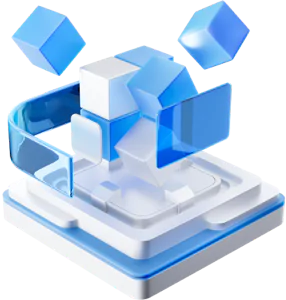
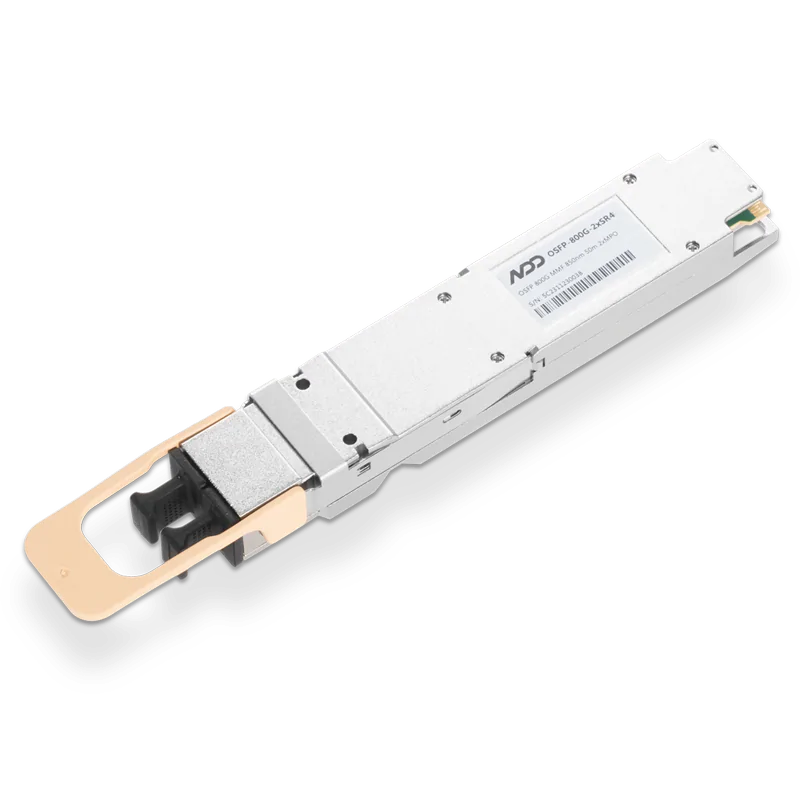 800GBASE-2xSR4 OSFP PAM4 850nm 50m MMF Module
800GBASE-2xSR4 OSFP PAM4 850nm 50m MMF Module- 1AI Boom Fuels Optical Transceiver Surge
- 2PFC Flow Control Technology and Challenges in RoCEv2 Network Deployment
- 3In-Depth Look at NADDOD's OSFP 800G DR8 and 400G DR4 InfiniBand NDR Transceivers
- 4OFC 2025 Recap: Key Innovations Driving Optical Networking Forward
- 5NADDOD 1.6T XDR Infiniband Module: Proven Compatibility with NVIDIA Quantum-X800 Switch























